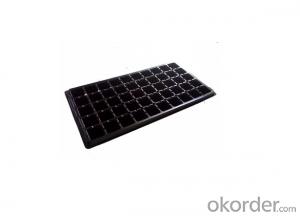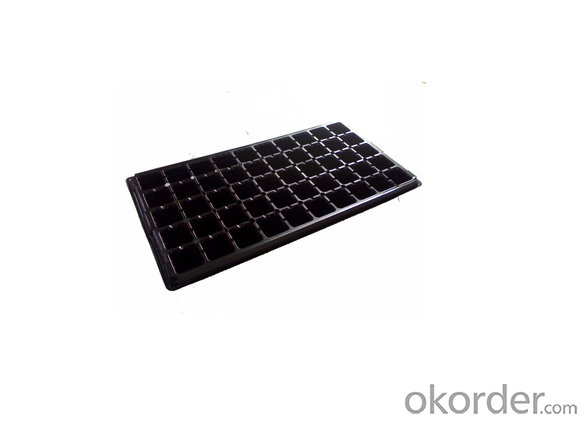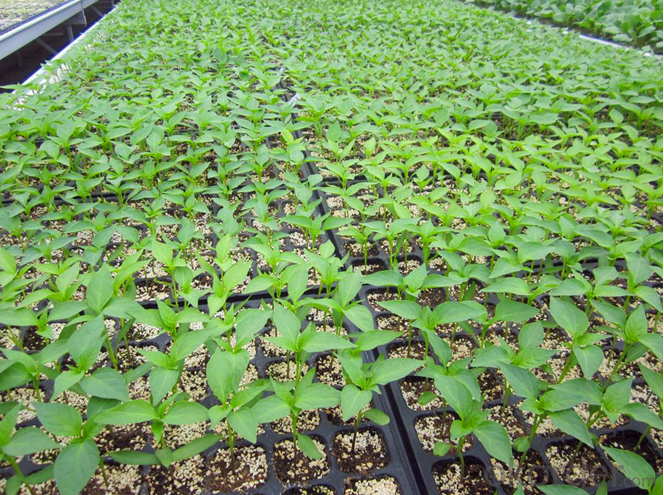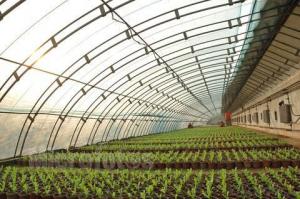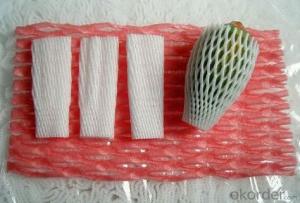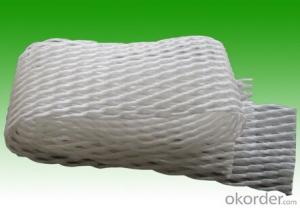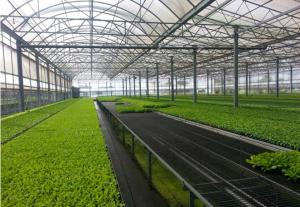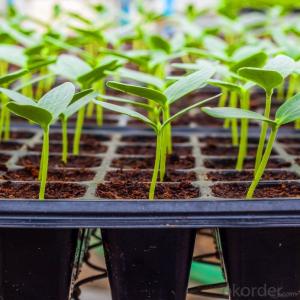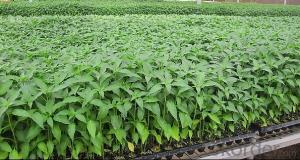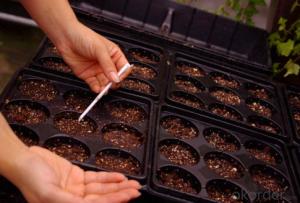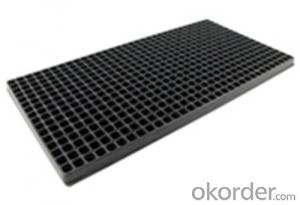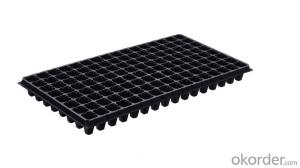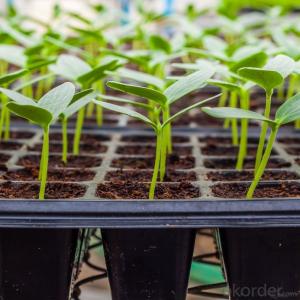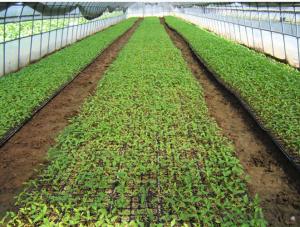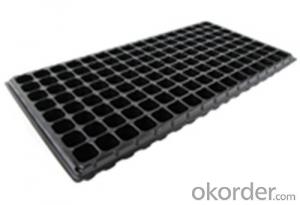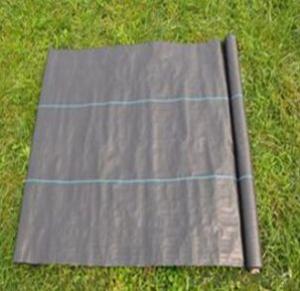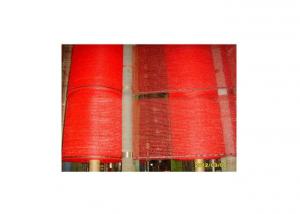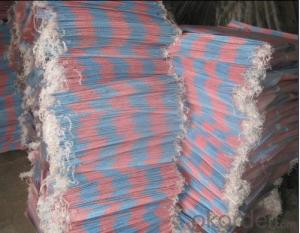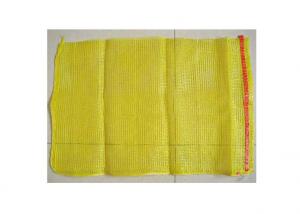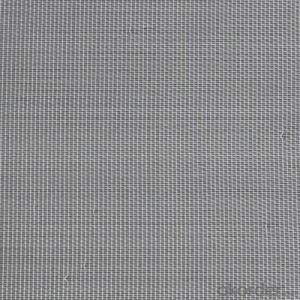Square Nursery Plug Tray, Nursery Plug Tray, Seeding Plug Tray
- Loading Port:
- China main port
- Payment Terms:
- TT OR LC
- Min Order Qty:
- 3000 pc
- Supply Capability:
- 2000000 pc/month
OKorder Service Pledge
OKorder Financial Service
You Might Also Like
Specification of Plug Trays HIPS Made Plastic Plug Tray for Greenhouse (Growing and Seedling):
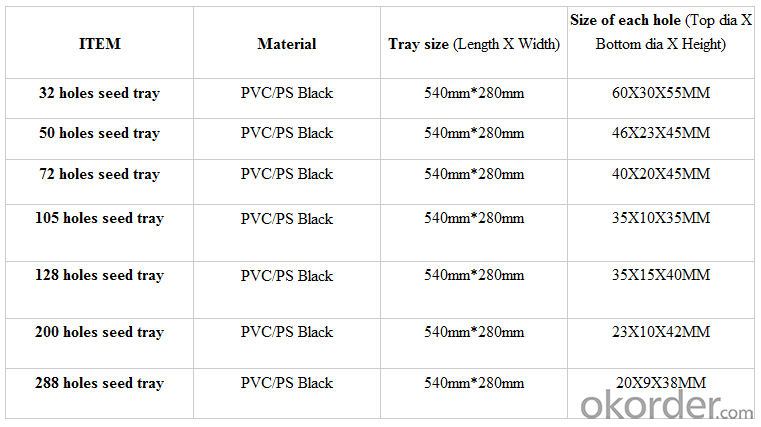
Features of Plug Trays HIPS Made Plastic Plug Tray for Greenhouse (Growing and Seedling):
· Material: HIPS
· Thickness: 0.5mm-1.5mm, Standard:1mm
· Weight: 80g(±5)g-230g(±5)g, Standard weight:155g(±5)g
· Size: length:490mm-540mm, width:190mm-345mm,depth:25mm-150mm
· Standard:540mmX280mm
· Cell count: 18-512
· Package: In Carton
· Warrenty: 8-10 times
Packaging & Delivery
Packing Detail: export standard carton or large bags
Delivery time: 4 million per momth after receipt of deposit
Advantage:
Waterproof, UV-resistant, extrusion-resistant
Easy carry for young seeding plant and grow
Service:
1. Quick, efficient and professional response within 24 hours, 14 hours online services
2. 10 years manufacturing and exporting experience in agriculture field.
3. Technical support and solution by chief engineer.
4. Strict quality control system & team, high reputation in the market.
5. Full range of irrigation products for choice
6. OEM/ODM services
7. Accept sample order before Mass Order
Picture of Plug Trays HIPS Made Plastic Plug Tray for Greenhouse (Growing and Seedling):
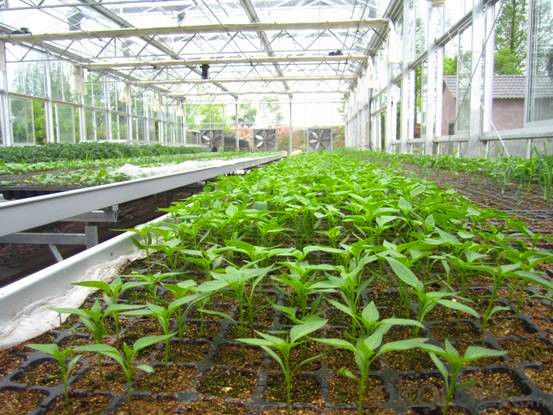
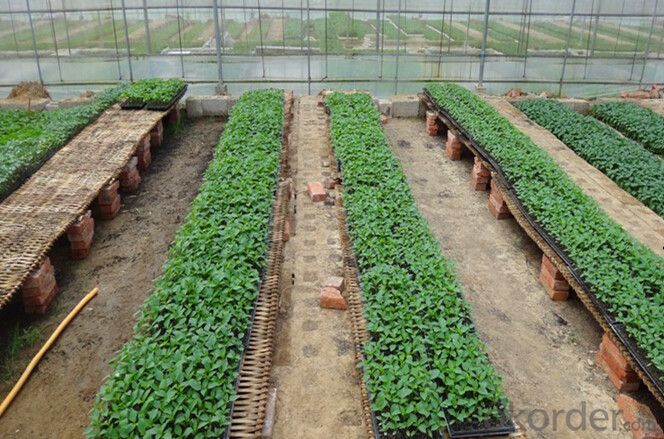
FAQ of Plug Trays HIPS Made Plastic Plug Tray for Greenhouse (Growing and Seedling):
Q: 1.How long is the production time?
A: Usually one to two weeks.
Q: 2.How is the seed tray being packaged?
A: They can be packaged in carton or pallets. Carton size is 1375px*725px*1250px.
Q:3.How many times can the seed tray be used?
A: Under the same environment, it is decided by the thickness. Usually 0.6mm thickness can be used for 1 or 2 times.
1.0 thickness can be used for 3-4 times. 1.5 thickness can be used for 8-10 times.
- Q: How are plastic twine and ropes used in agriculture?
- Plastic twine and ropes are commonly used in agriculture for various purposes such as tying plants, supporting crops, bundling harvested produce, and constructing trellises. They provide strength and durability, ensuring proper plant support and organization. Additionally, plastic twine and ropes are resistant to moisture and can withstand outdoor conditions, making them ideal for agricultural applications.
- Q: Is it possible to use biodegradable seedling nets or covers to protect seedlings instead of traditional non-biodegradable ones?
- <p>Yes, seedlings can be effectively protected using biodegradable seedling nets or covers as an alternative to traditional non-biodegradable options. These biodegradable materials, often made from plant-based polymers or natural fibers, provide the necessary protection against pests and environmental stressors while also decomposing naturally after a certain period, reducing waste and environmental impact. They offer a sustainable solution that supports the growth of healthy seedlings without compromising the integrity of the ecosystem.</p>
- Q: Explain the distinctions between the use of plastic mulch in agriculture versus farming without mulch.
- <p>Agricultural plastic mulch farming involves the use of plastic sheets to cover the soil, which helps in weed control, retains soil moisture, and can increase soil temperature. This method can lead to earlier crop maturity and higher yields. Non-mulch farming, on the other hand, does not use plastic sheets, relying instead on traditional methods of weed control, such as tillage or manual removal. Non-mulch farming might be more susceptible to soil erosion, have less moisture retention, and potentially lower yields compared to mulch farming. Additionally, plastic mulch can contribute to environmental concerns due to the non-biodegradable nature of plastics, whereas non-mulch farming avoids these issues.</p>
- Q: How do you prevent ground cover plants from interfering with nearby irrigation systems?
- One way to prevent ground cover plants from interfering with nearby irrigation systems is by using mulch or landscape fabric. These materials create a barrier between the plants and the irrigation system, preventing their roots from growing into the pipes or getting tangled in the sprinkler heads. Additionally, regular monitoring and maintenance of the irrigation system is important to promptly detect any potential issues caused by the ground cover plants and take necessary actions to prevent further interference.
- Q: How do agricultural plastic products help with hydroponic nutrient film technique?
- Agricultural plastic products play a crucial role in hydroponic nutrient film technique by providing essential components such as channels and troughs. These plastic materials help create a controlled environment for the nutrient solution to flow and distribute evenly across the plant roots. They also prevent water loss through evaporation and minimize contact with air, ensuring optimal nutrient uptake and water efficiency in hydroponic systems.
- Q: Would anyone tell me a G36C airsoftgun with no plastic?
- No such thing. For that matter, a real G36 has more plastic it its construction than an M-4. IIRC, the barrel internals are the only steel on the actual rifle, even the receiver is of polymer construction.
- Q: What should I do with the waste plastic bags?
- Styrofoam. This kind of plastic waste is usually buried or incinerated. At present, the proportion of recycled plastics in the United States is very low, only 5%.
- Q: I bought some fine silver bars and they came in plastic. Will the silver lose value if I take it out of the plastic?
- no- they will loose value if the market goes down.
- Q: What is plant-based plastic?
- plastic solarreflectorchip routingmessagesbothways!
- Q: Can nursery trays be used for starting bonsai cuttings?
- Yes, nursery trays can be used for starting bonsai cuttings. These trays provide a suitable environment for the cuttings to root and grow, and they can easily accommodate multiple cuttings at once. It is important, however, to ensure that the trays have proper drainage holes and are filled with the appropriate growing medium for bonsai cultivation.
Send your message to us
Square Nursery Plug Tray, Nursery Plug Tray, Seeding Plug Tray
- Loading Port:
- China main port
- Payment Terms:
- TT OR LC
- Min Order Qty:
- 3000 pc
- Supply Capability:
- 2000000 pc/month
OKorder Service Pledge
OKorder Financial Service
Similar products
Hot products
Hot Searches
Related keywords
